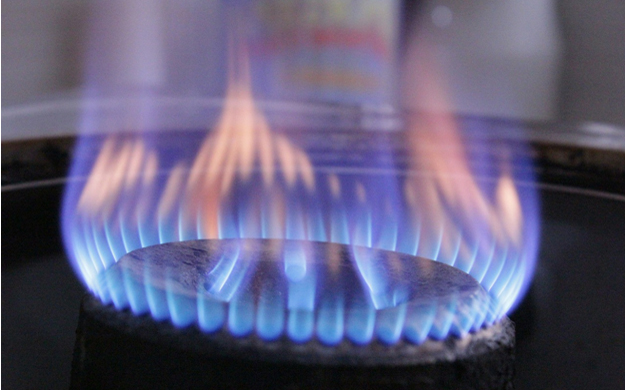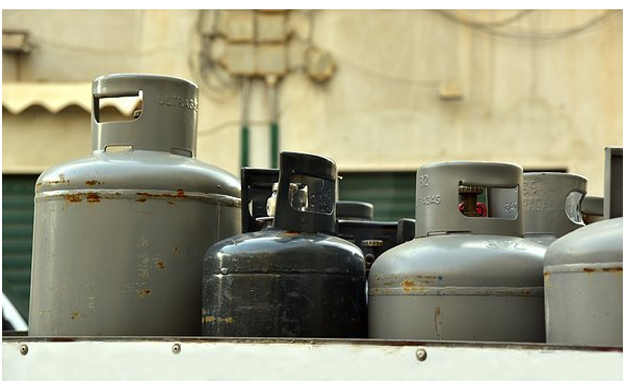
While multiple kinds of gases can be used at home, natural gas (methane) is the most common gas that is being supplied by gas mains. When it comes to energy content, it can vary from country to country.
In some places, there are no gas mains to supply natural gas to the homes. In this case, LPG in gas bottles is the best alternative in the absence of gas mains. You should know that Compressed Natural Gas (CNG) and Biogas are also used in some places, and the deciding factor is the local supply situation.
Type of Gas Used in Homes
Natural gas (methane) is the most common type of gas used in homes. In areas where natural gas can’t be delivered or is unavailable, people use Liquefied Petroleum Gas (LPG), Compressed Natural Gas (CNG), or biogas.
Natural gas is supplied by the pipelines, while LPG and CNG are delivered in tanks or cylinders. On the other hand, biogas is produced on-site by using animal dung. Among four types of gas used in homes, LPG (Propane) has the highest energy content at 93.2 MJ/m3, while methane or natural gas stands at 38.7 MJ/m3.
The gas used in Gas Bottles
The gas used in home gas bottles is known as Liquefied Petroleum Gas (LPG), which is either butane or Propane, flammable hydrocarbons used as fuel for LPG cars, home cooking, heating, hot water, and other LPG vehicles.
You should know that the type of gas used in homes as gas bottles is always LPG. Therefore, the type of gas used in the home is either butane or Propane, or a mixture of both. Other types of gas used in homes are natural gas that is also known as mains gas or CNG, both of which is methane.
Cooking Gas Cylinder
A cooking gas cylinder comes in different weights, such as 9Kgs, 14.2Kgs, and 45Kgs, as a domestic gas cylinder. For those who use LPG for cooking only, a cooking gas cylinder is a single 45Kgs of the gas cylinder that lasts for a year and more. You should know that 45Kgs of gas bottles come with a cylinder capacity of 88 liters.
LPG gas bottles come with the main gas valve through which you can control the release of the gas. The provider or supplier provides these bottles with the Pressure Relief Valve (PRV). It is a safe device fixed into the main gas valve of the bottles.
When the gas pressure inside the cylinder increases due to heat or external factors, the pressure relief valve releases some of the gas to relieve the pressure. The various cylinders and bottles contain gas and liquid, as LPG liquefies under pressure. On the other hand, CNG (Compressed Natural Gas) is stored in special CNG gas cylinders.
For a continuous supply of home gas bottles, you need to rely on a reputable service provider like PlusGas. PlusGas has earned a robust reputation as one of the most reliable LPG gas suppliers in Queensland over the years. One of the best things about PlusGas is if you are switching to them from another supplier, they will return their cylinder to them at no extra charge.
If you need a home gas bottle urgently, PlusGas is popular for providing same day or next day delivery. You can order your cylinder anytime on any day of the week by email, voice message, online order form, or text.
What Does Cooking Gas Contain?
Cooking gas contains either liquefied petroleum gas or natural gas (methane). If you use LPG at your home, your gas cylinder contains either butane, Propane, or a mixture of both gases. If you are cooking with biogas or CNG, the main constituent is methane.
LPG versus CNG for Gas Used in Gas Bottles

As a CNG cylinder contains a greater LPG energy content, this cylinder would need replacement more than twice. Hence, you may face difficulties more often for checking CNG cylinders and while ordering them. Furthermore, you may also face some extra charges with some inconveniences due to extra deliveries and added weight.
It is because the weight of high-pressure CNG cylinders is more than twice. For example, an empty 45Kgs LPG cylinder’s weight is only 35Kgs, while an empty CNG cylinder weighs about 108Kgs due to comparable volume capacity.
Therefore, while comparing empty cylinders of LPG and CNG, you would find that the CNG cylinder is three times heavier than its weight. Hence, these cylinders are too heavy for exchange purposes and transport.
Among four types of gas used in homes, LPG (Propane) has the highest energy content at 93.2 MJ/m3, while methane or natural gas stands at 38.7 MJ/m3.Using this energy price comparison website would come handy when considering saving cost on the best for your home.
How is Cooking Gas Produced?
Have you ever wondered how cooking gas is produced? The gas that comes in bottles at your home is produced by using the LPG gas manufacturing process. It occurs during oil refining, and natural gas processing as cooking gas used in gas bottles is Propane instead of some different gas. You should know that cooking gas can also be produced using piped gas or natural gas.
How Does Natural Gas Get Safely to Your House?
The Final Words
For many people, the types of kinds of gas used in their homes don’t matter as long as they are cooking easily. Once they face CNG cylinders’ issues and pay extra charges for added weight and extra deliveries, they turn to LPG home bottles.
If you are setting up your home and thinking about taking a new gas connection, we recommend you to prefer LPG over other gases. If you’re considering installing a gas fire but don’t know where to start, we recommend contacting The Fire and Stove Guys. They stock a range of Gas Fires Coventry, so you’ll be sure to find the perfect fit for your home. Additionally, they provide comprehensive chimney sweeping services and regular maintenance- an essential part of owning a gas fire. By contacting licensed professionals, you can ensure that your gas fire is fitted correctly, runs smoothly, and is set up for the years to come! Contact them today to learn more!
Leave a Reply